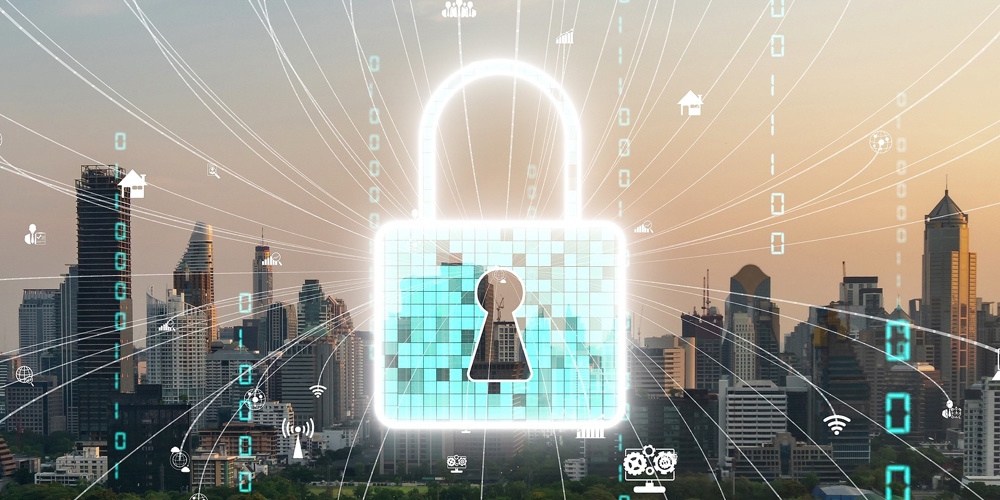Defend your credit union castle from cyberattacks

Credit unions have embraced technology to enhance their services and streamline operations, but it’s not without cost. While this shift has brought numerous benefits, it has also opened the door to a growing array of cyber threats.
As we enter 2024, the importance of cybersecurity for credit unions cannot be underestimated, for both credit unions and your members.
The ever-evolving threat landscape
The threats posed by cyber-attacks continue to grow in complexity and severity. Today, credit unions face a wide range of threats, including data breaches, ransomware attacks, phishing schemes and more. The main motive behind cyber-attacks on credit unions is financial gain by way of attaining personally identifiable information (PII).
Over the years, these threats have evolved with technological advancements. Attackers continually devise new methods to breach organizations – often by exploiting emerging technologies like artificial intelligence (AI) and mobile banking apps. Attacks on third- and fourth-party service providers are also becoming more problematic as cyber criminals are attempting to exploit vendor weaknesses to gain entry into the credit union network. Emphasis should be placed on gaining a thorough understanding of the relationship and what systems and data will be shared as well as a review of the vendors’ security practices and any history of breaches or compromise.
Litigation and notification are also becoming more complex. Credit unions need to be aware of the potential impact associated with the National Credit Union Administration’s adoption of a new 72-hour cyber incident notification rule. Carefully review your current incident response plans and include reporting time frames and requirements for providing notice to the NCUA. Additionally, you should consider incorporating clear standards for assessing and identifying reportable incidents including escalation for notifying credit union management and the NCUA.
The changing face of cybersecurity
To combat evolving cyber threats, cybersecurity practices have also evolved. Compared to five years ago, cybersecurity today is more proactive, integrated and data driven. Credit unions now employ advanced threat detection tools, AI and machine learning algorithms to monitor network traffic and identify anomalies in real-time. These advancements enable early detection and mitigation of potential breaches.
Cybersecurity has shifted from being solely the responsibility of IT departments to becoming an organization-wide effort. Today, every employee plays a role in maintaining security – every employee should consider themselves to be a risk manager. It’s not just about firewalls and antivirus software; it’s about creating a culture of security where every staff member is vigilant and educated about potential threats.
Identifying the biggest threats
Understanding the biggest threats to credit union cybersecurity is essential. While fending off external cyber-attacks should be a high priority, credit unions should not overlook internal weaknesses that cybercriminals may exploit. Employees, whether intentionally or unintentionally, are often the weakest links in the security chain.
Balancing employee freedom with cybersecurity could be a delicate dance. Employees need access to digital tools and data to perform their jobs efficiently, but this access can also pose security risks. More convenience from software tools brings additional threats. This is especially relevant as more organizations utilize remote or hybrid work environments.
Effective cybersecurity education
Focus on creating and reinforcing a company culture of safety and security. It’s important that the entire staff recognizes that they each play a critical role in securing the credit union network and protecting its assets.
Establish and enforce progressive education requirements that include behavior-driven training, interactive learning and simulations.
Methods for effective cybersecurity education include:
- Conducting routine, simulated phishing attacks
- Performing engaging training for all employees
- Implementing a “see something, say something” policy
- Introducing gamification testing methods
Minimizing threats of cyber-attacks
Despite the increasingly complex digital environment, many traditional risk mitigation strategies related to cyber hygiene are still effective. These include measures such as:
- Routine risk assessments
- Providing access controls based on role
- Vulnerability testing
- Inventory of digital assets
- Education and training
- Mobile device management
Cyber risks and cybersecurity will continue to change and evolve. By embracing advanced technology, fostering a culture of security, and educating employees effectively, credit unions can navigate this dynamic landscape and help protect their operations, data, and the trust of their members. In this ongoing battle against cybercriminals, vigilance and preparedness are the keys to success for defending the credit union castles.





